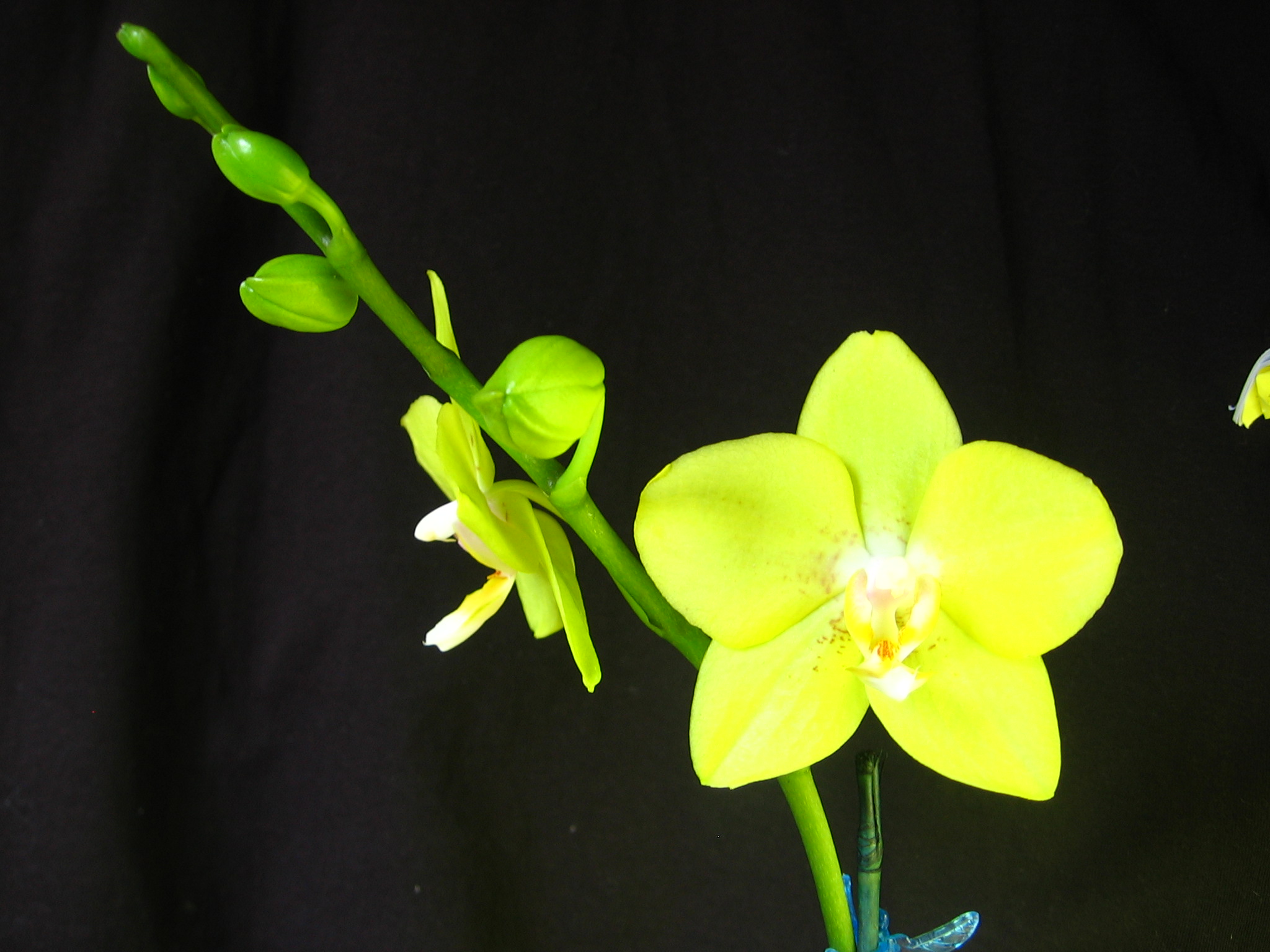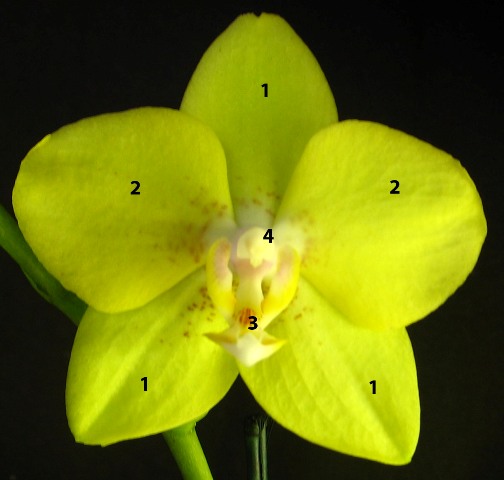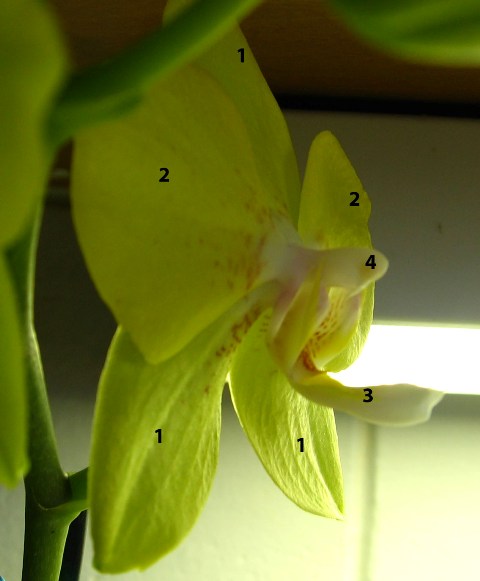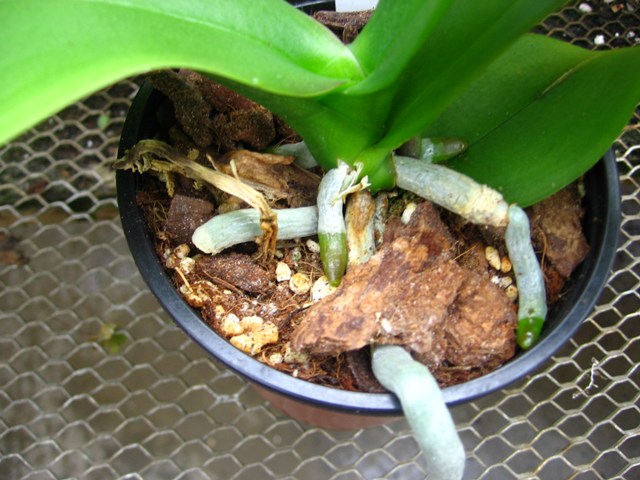


The Flower:
The flowers occur on a long
stem like structure called the spike. On a single spike there are typically
ten to twenty flowers. Some species may have as many as seventy blooms on a
single spike. The flowers can easily last for two months and sometimes
plants will flower up to eight months out of the year. The flowers of
Phalaenopsis sago lisa are yellow in color and are about three and a
half inches in diameter. Phalaenopsis flower has three sepals and three
petals. In orchids sepals are colored, unlike most other flowers where the
sepals are often green and are notably less colorful then the petals. The
lowest petal is highly modified compared to the other two petals. It is
referred to as the lip or labellum. The labellum is extensively colored to
attract pollinating insects and acts as the landing platform for insects. A
finger like projection, or column, protrudes from the center on the flower.
The column houses the reproductive structures.
1 Sepals - there are 3 sepals per flower
2 Petals - there are 3 petals, the lower one is called the
labellum
3 Labellum - very colorful landing platform for
pollinators
4 Column - houses reproductive structures.
The Root:
The Leaves:


